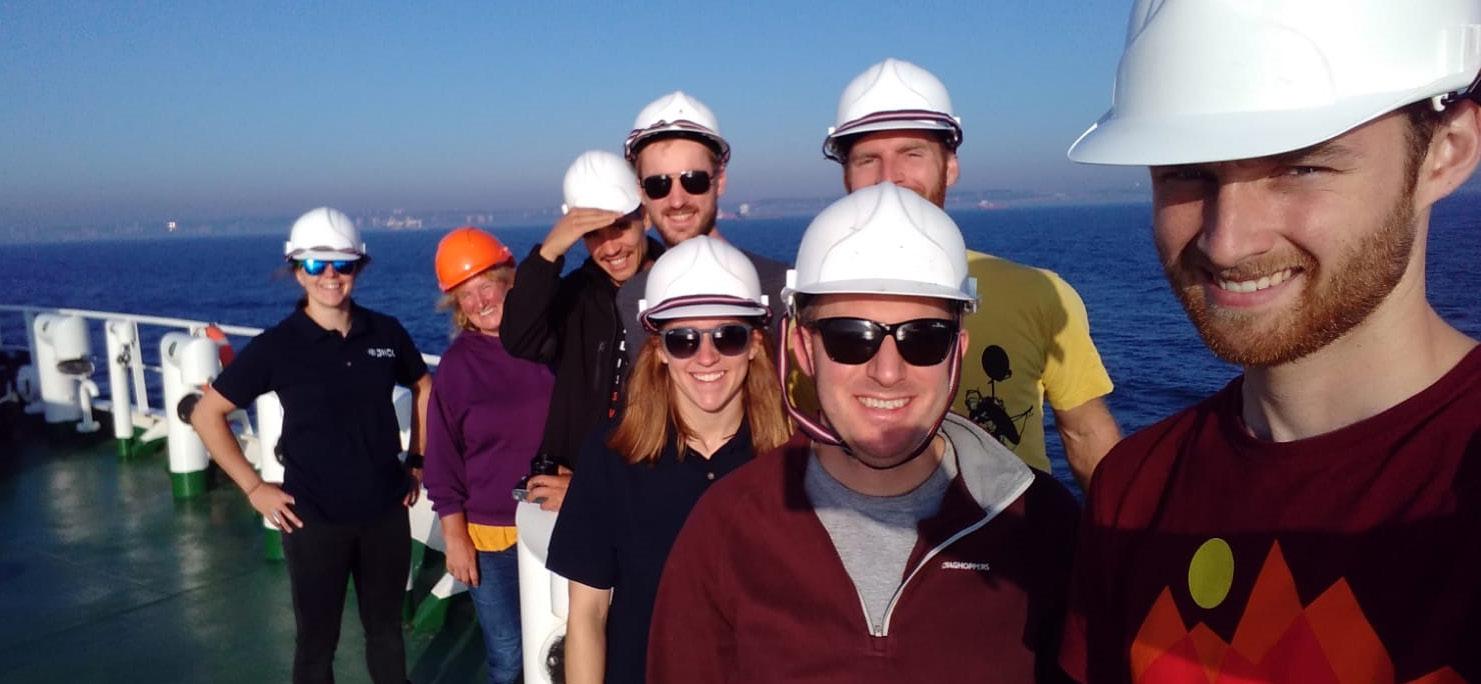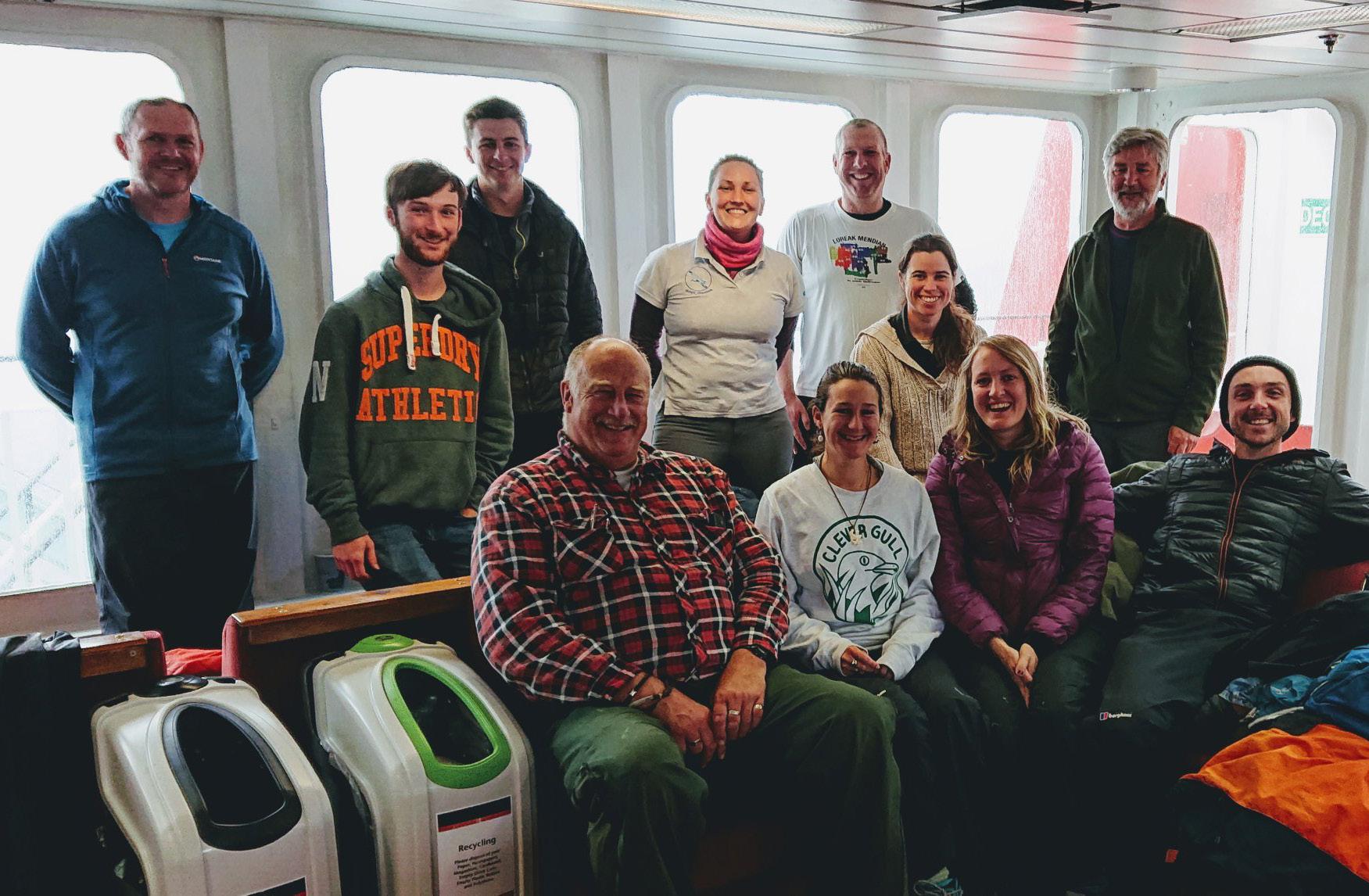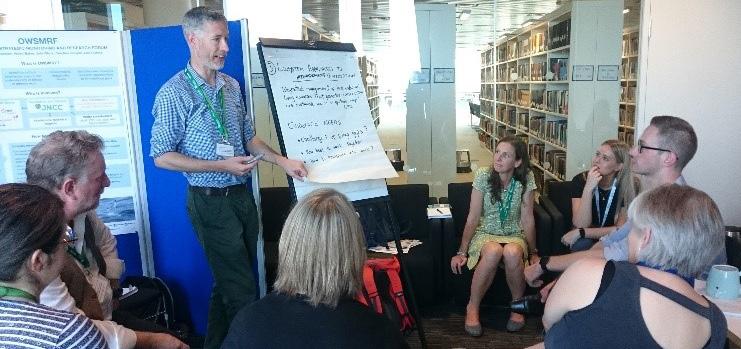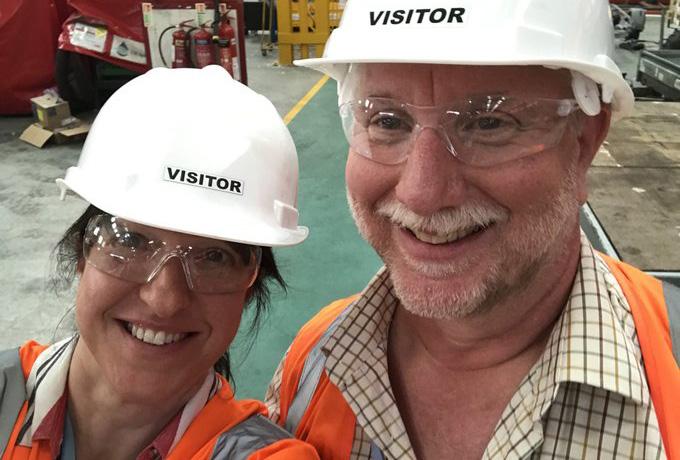
4 minute read
JNCC Bulletin August 2019
from JNCC Bulletin August 2019
by jncc_uk
1219S survey

1219S survey team aboard the MRV Scotia © JNCC
The bank holiday weekend saw a team from JNCC, Marine Scotland Science and National Museums Scotland depart to West Shetland Shelf Nature Conservation Marine Protected Area (MPA) aboard the MRV Scotia for a 16-day survey, collecting samples to monitor the condition of the MPA. Last time the team surveyed the area a new species of worm was discovered! The worm, given the scientific name Ampharete oculicirrata, has a unique anatomy with its eyes in its head and in its bottom. Ampharetes are marine polychaetes, also known as bristle worms, and are important as there are many of them and they occupy many different levels of the food chain. https://jncc.gov.uk/news/all-eyes-on-a-new-worm-species/
West Shetland Shelf is located off the north coast of Scotland and covers an area of over 4,000 km². This makes it a similar size to the Cairngorms National Park. The 1219S survey team have been busy collecting multibeam bathymetry and backscatter data to map the Offshore Subtidal Sands and Gravels designated habitat feature, and undertaking dropframe camera tows and grab sampling to collect sediments and animal samples.
Catch-up on the survey on our blog at https://jncc.gov.uk/about-jncc/jncc-blog/
CITES CoP18

JNCC colleagues, past and present, at CITES CoP18 © JNCC
Every Conference of the Parties (CoP) is challenging, and the 18th meeting of the CoP to the Convention on International Trade in Endangered Species of Wild Fauna and Flora (CITES) was especially so with delegates having to deal with its largest agenda over 10 long intensive days. JNCC, as the UK’s Scientific Authority (Fauna), participated in the UK delegation.
The agenda included 57 proposals to amend the lists of species resulting in the inclusion of species such as giraffes, mako shark and ornamental spiders. Other key issues (in >150 documents) included a focus on how to engage with those rural communities which live with CITES species, a continued emphasis on listing marine species, and ongoing divisions over approaches (protection or sustainable use) to the conservation of iconic species in Africa. A summary of the CoP can be found at https://enb.iisd.org/download/ pdf/enb21101e.pdf
VSAS mentor training

Volunteer Seabirds At Sea © JNCC
JNCC ran another successful Volunteer Seabirds At Sea (VSAS) mentor training week in August, resulting in eight new mentors who can now contribute to this exciting citizen science scheme, collecting seabird and cetacean data off the coast of western Scotland, and mentoring less experienced surveyors.
The VSAS programme aims to collect high-quality seabird data from ferries using volunteers, contributing to the monitoring of trends in abundance and distribution of birds locally, as well as to updates of the European Seabirds at Sea database.
Science and Networking Day

Participants at our first Science and Networking Day © JNCC
Our first Science and Networking Day was held on Aberdeen University campus. The event was well attended with experts in biological sciences, environmental modelling, social sciences and engineering contributing to the morning presentations and afternoon breakouts.
This event was an excellent opportunity for networking, updating each other on key areas of work and identifying synergies with academic partners in the field of marine science and beyond. There were productive discussions on how best to engage with the research community, communicate and work together to address strategic evidence needs, including principles of project co-design and co-delivery. Lots of good project ideas have emerged from the event and JNCC staff are actively engaged in discussions with potential academic partners to take some of these ideas forward.
At sea for pollution response exercise

JNCC's Jason Weeks and Kirsty Meadows at the Oil Spill Response Ltd surface dispersants exercise © JNCC
It was hard-hats at the ready for Jason Weeks and Kirsty Meadows when they visited Oil Spill Response, the largest industry-funded co-operative which exists to respond to oil spills. After a session in the classroom, which included a workshop on communicating incidents to the public, they observed an at-sea response in the Solent. During this exercise, surface dispersants were deployed from a lowflying aircraft that sprayed the affected area.
JNCC operates a 24-hour pollution response advice service for pollution incidents in the offshore area of UK waters. We have experience of taking part in exercises and responding to real incidents across UK offshore waters.
Species dictionary update

Marine Recorder Species Dictionary image © David Connor
The latest update for the Marine Recorder Species Dictionary is live: https://www.esdm.co.uk/ marine-recorder-downloads The streamlined update process incorporates records directly from the Marine Species of the British Isles and Adjacent Seas (MSBIAS) list. The next update will capture more species additions.
Connect with us
jncc.gov.uk
twitter.com/JNCC_UK
facebook.com/JNCCUK
linkedin.com/company/jncc
If you have any comments, would like to know more about the work featured in this bulletin or would like to join our mailing list please email communications@jncc.gov.uk

